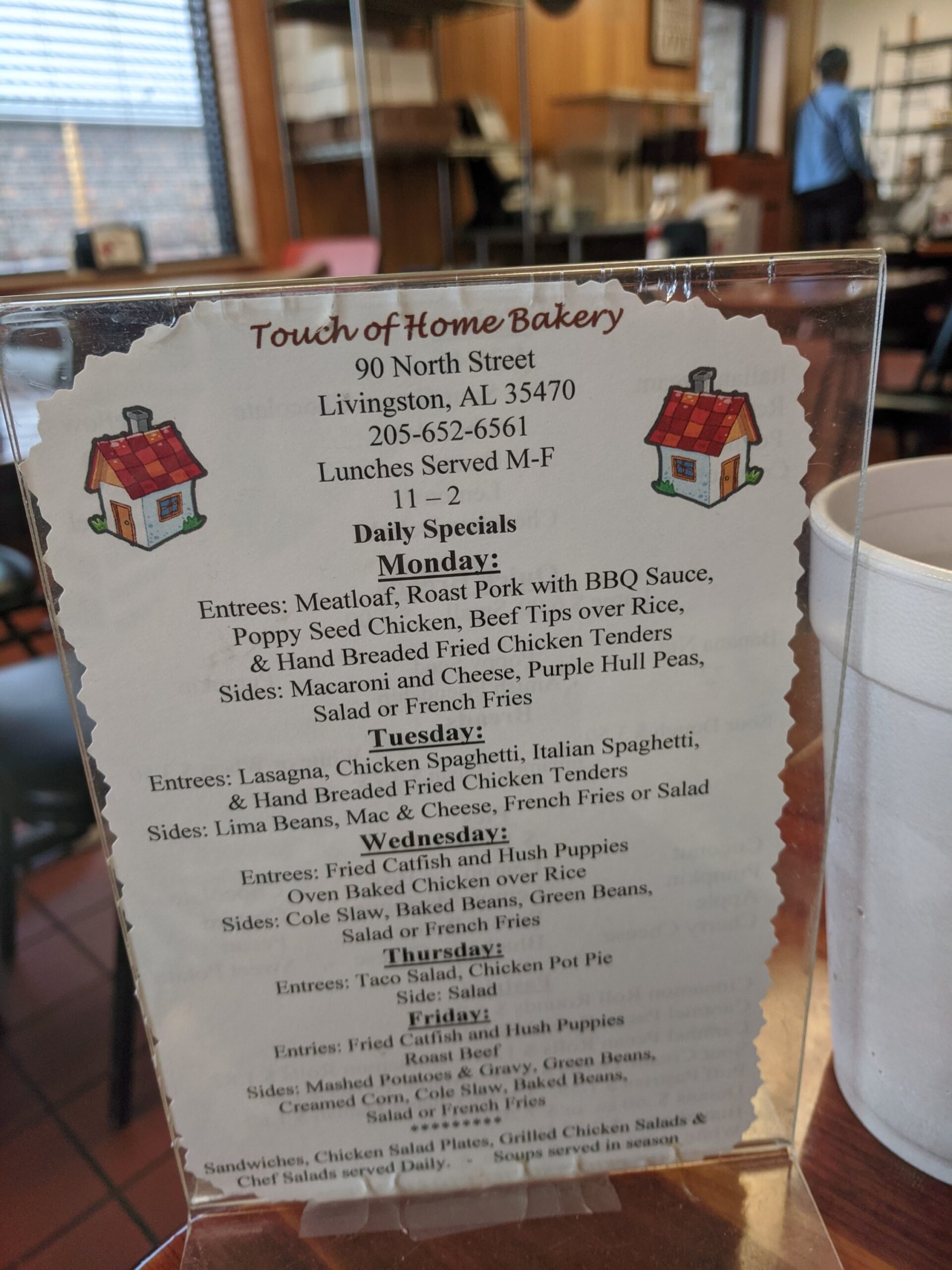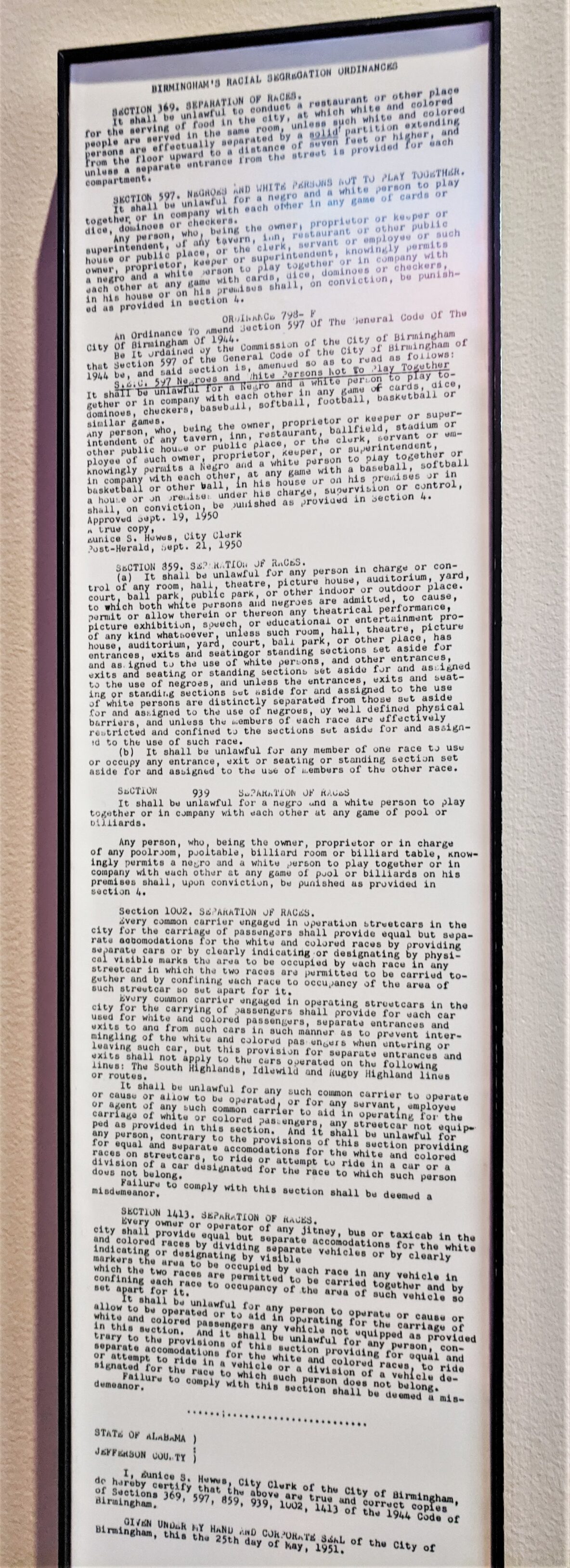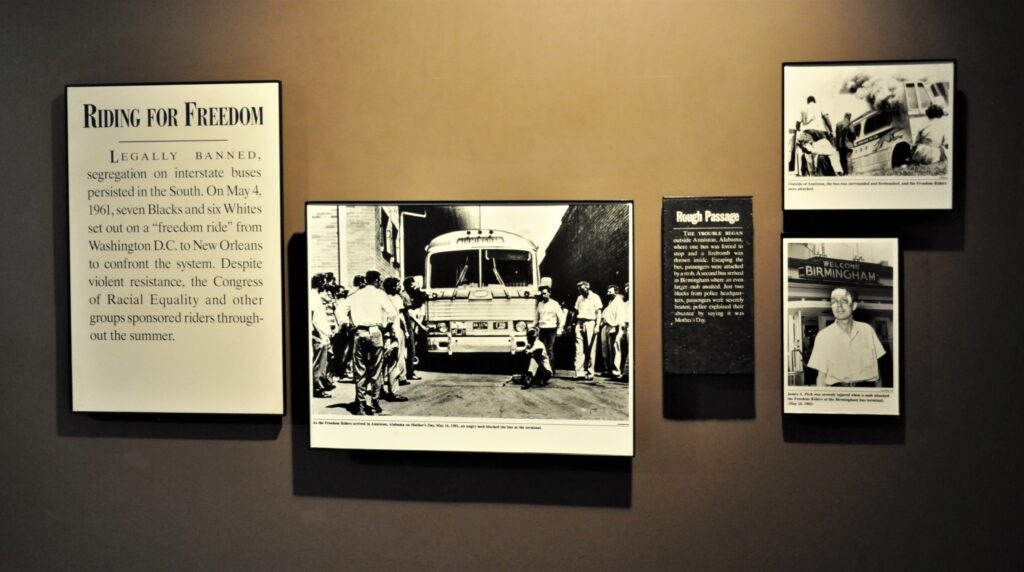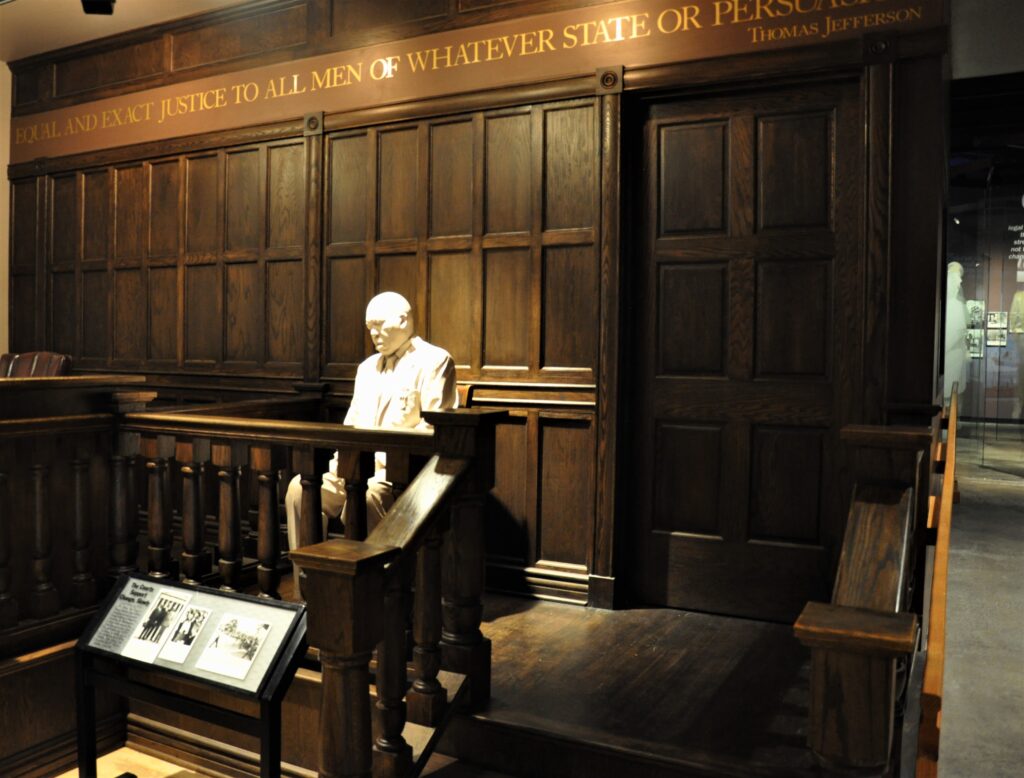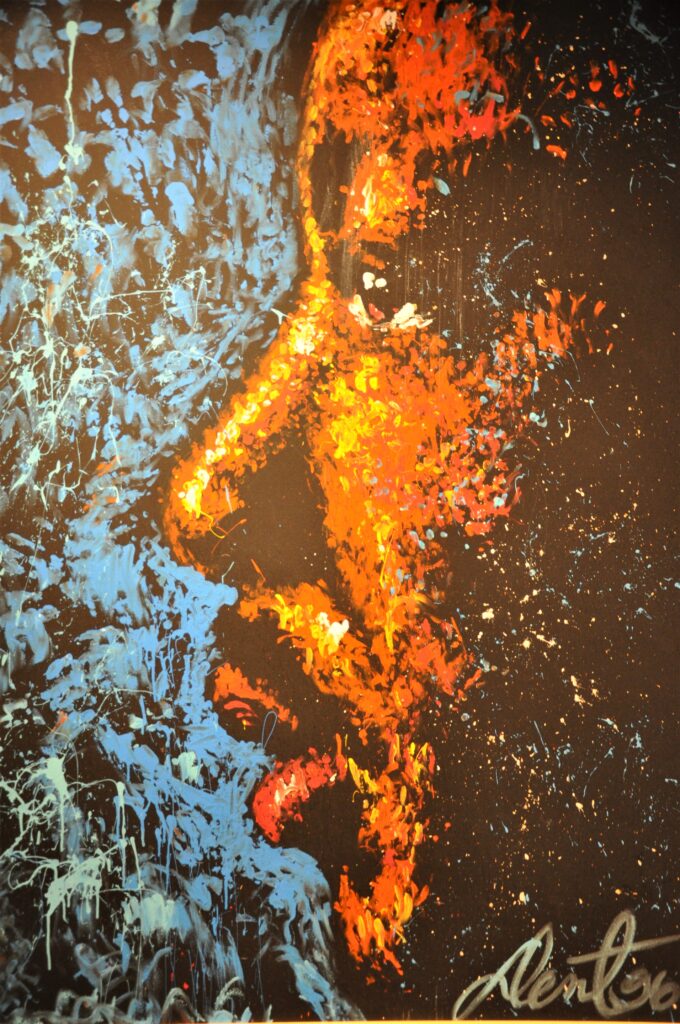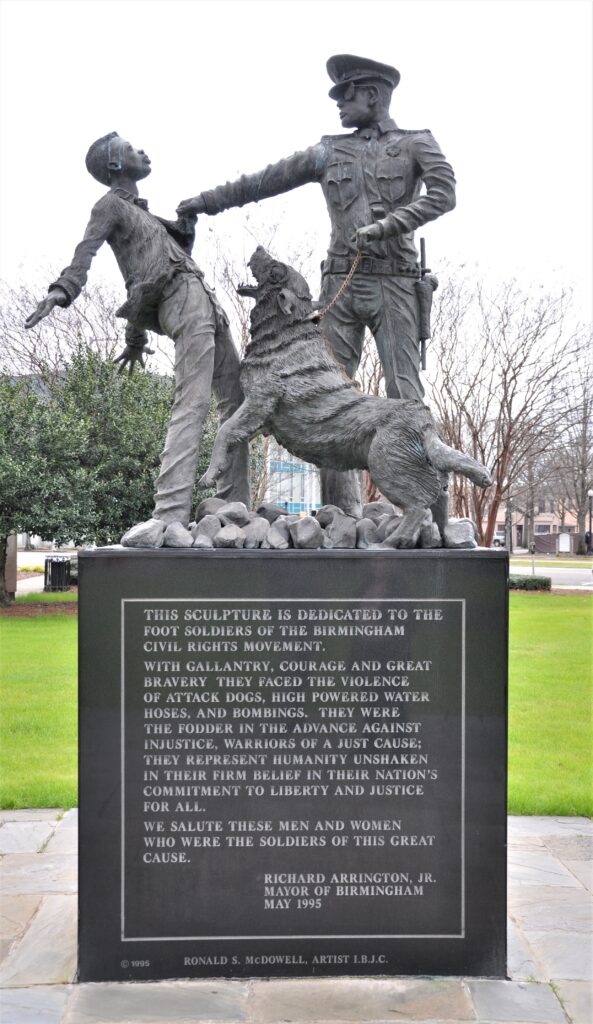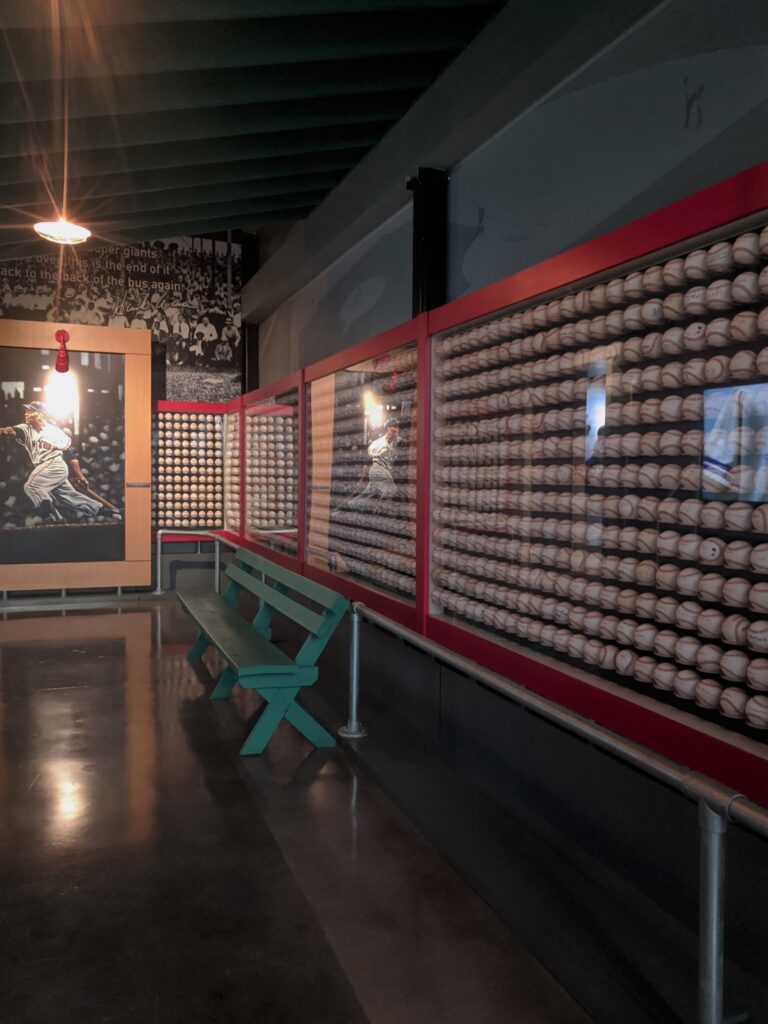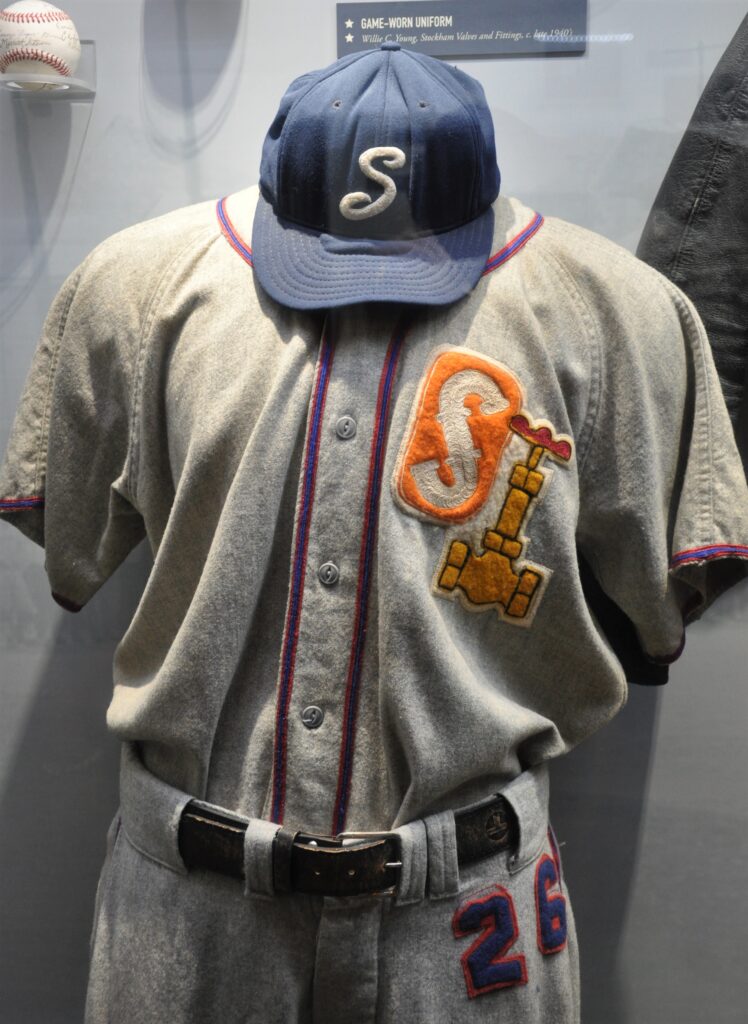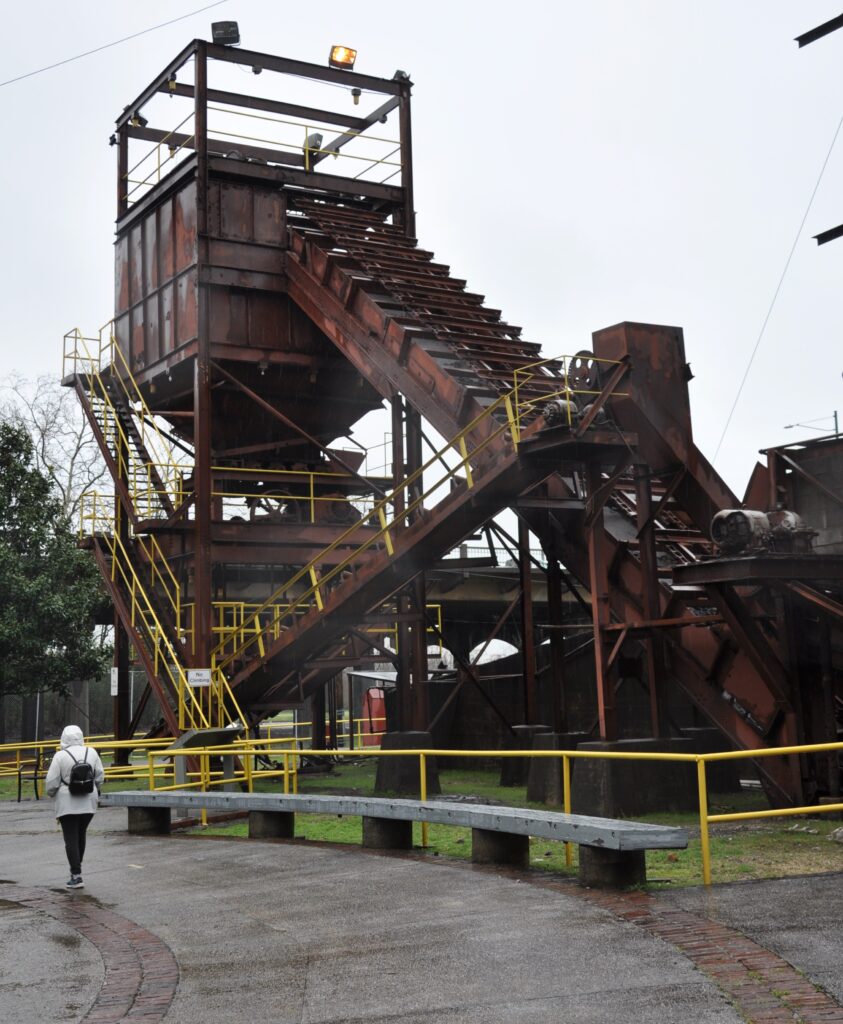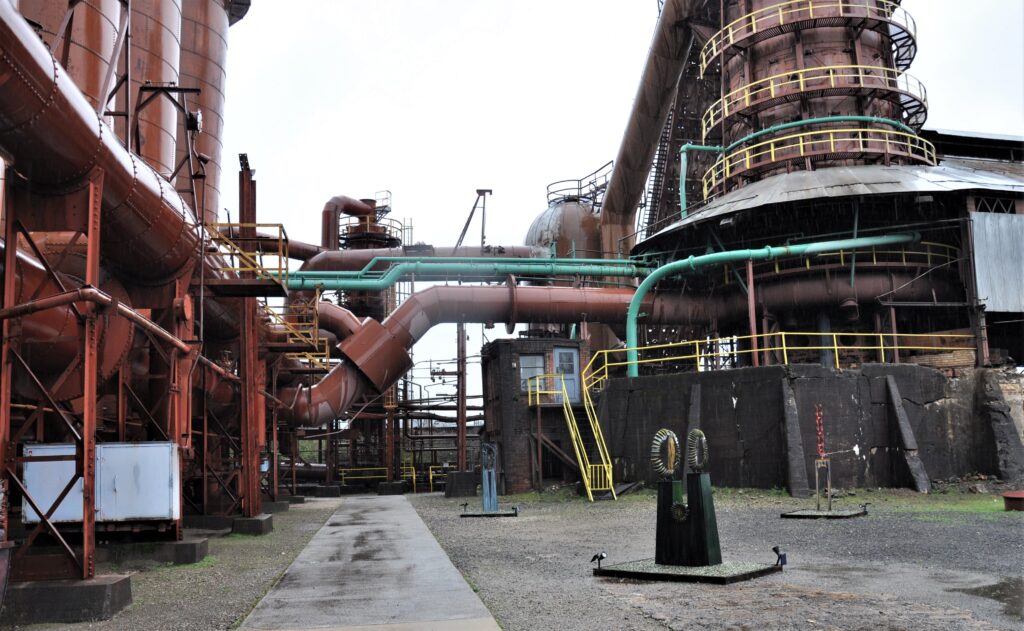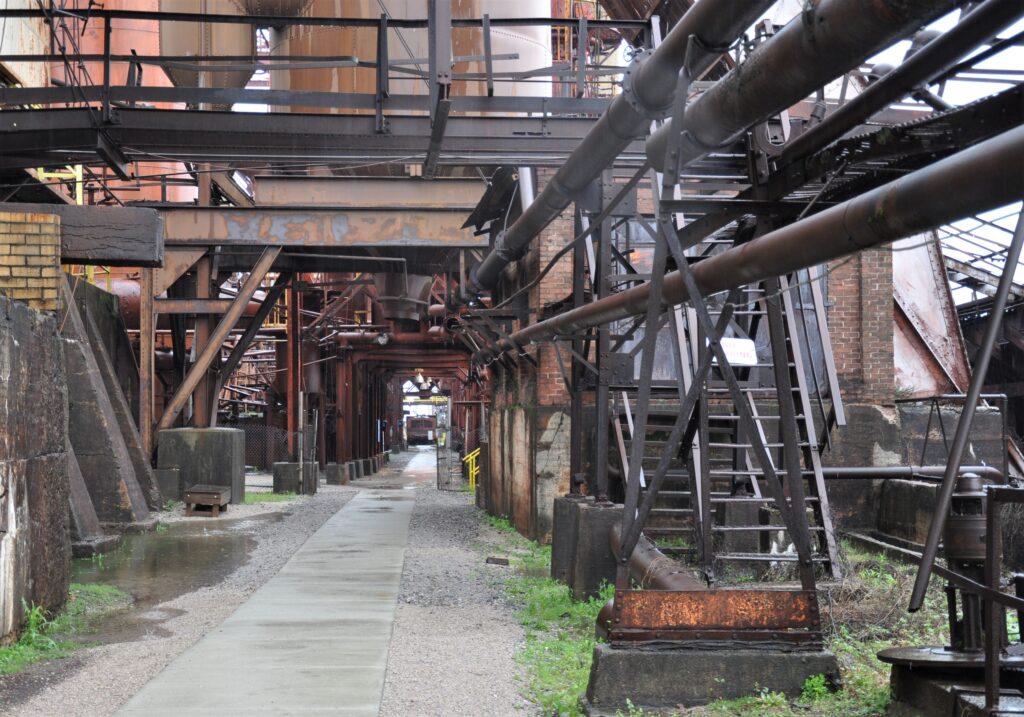We went to the Birmingham Civil Rights Institute and Museum this morning.

The museum is a Smithsonian affiliate focused on the civil rights movement in the 1950s and 60s in Birmingham. It’s located across the street from the 16th St Baptist Church that was bombed by the KKK in 1963, killing 4 young girls.
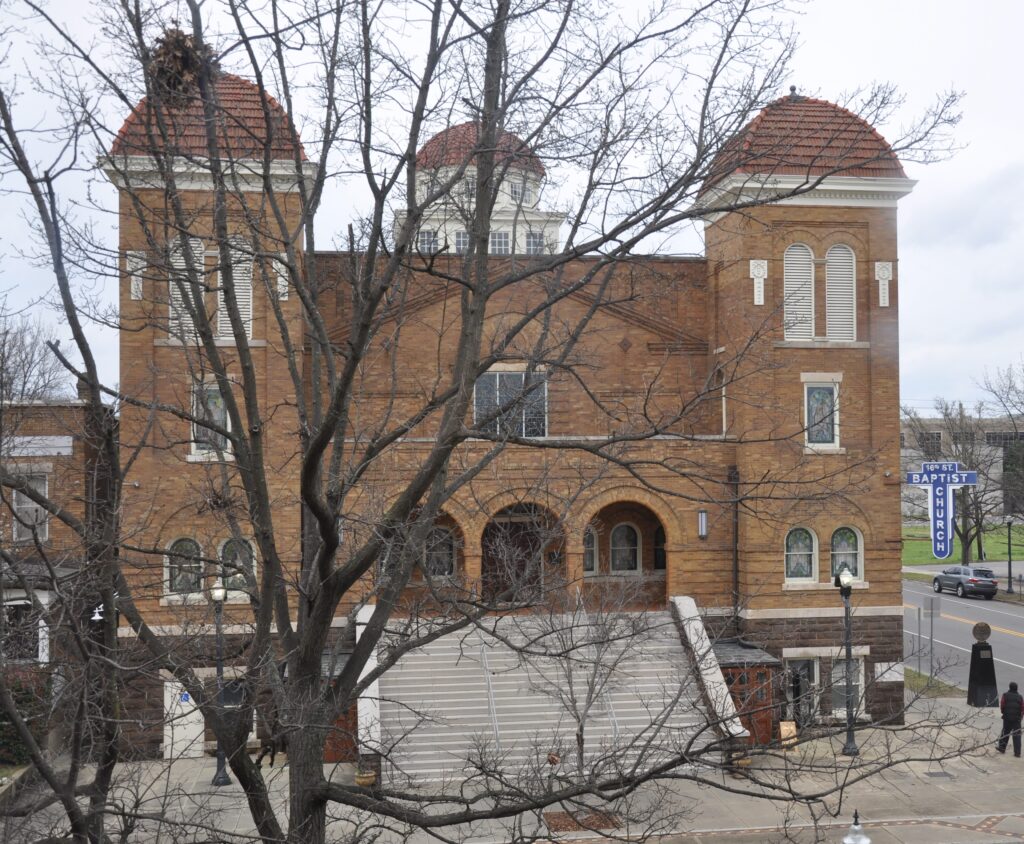
Kelly Ingram Park, next to the museum, was the site of a large student demonstration that turned into a violent confrontation with police and mass arrests.
This is the set of laws that were enacted to make absolutely sure that there would be no mixing of the races
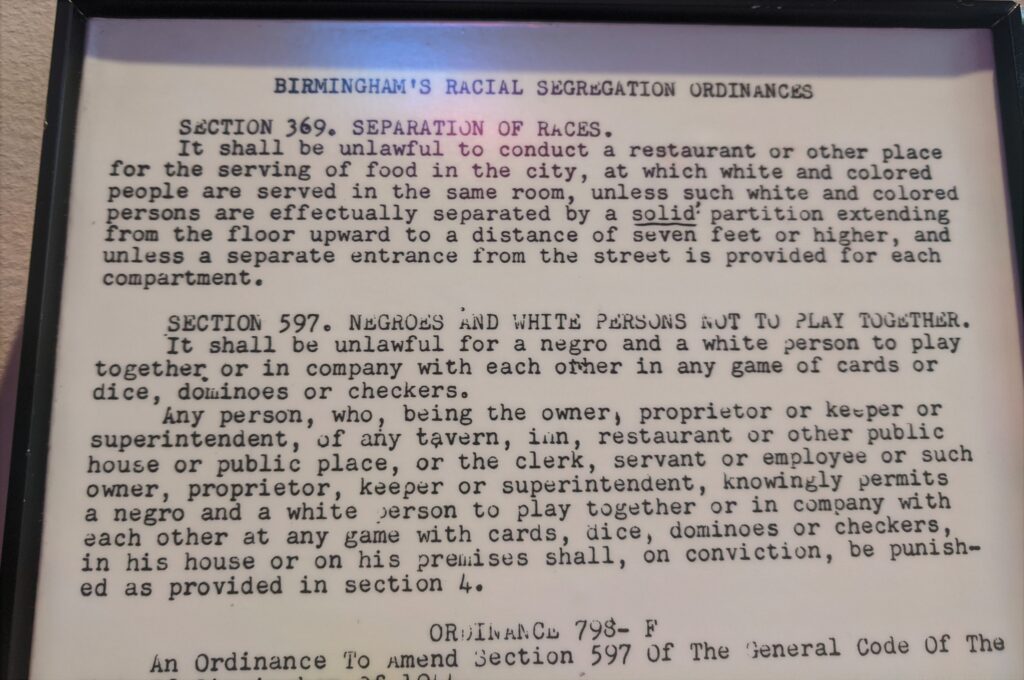
The first two give you a good idea of how complete the segregation was. We saw one impact of the second one later in the day.
We took a short walk to a soul food restaurant that Tom found on line. There was quite a line for the wings and catfish plates and luckily there was a park across the street where we figured we could sit and eat our lunch. A local couple struck up a conversation with us while we were waiting for food. Yet another in a stream of Southern strangers just talking to you for no particular reason! It’s just so different from the New England reserve. Takes some getting used to.
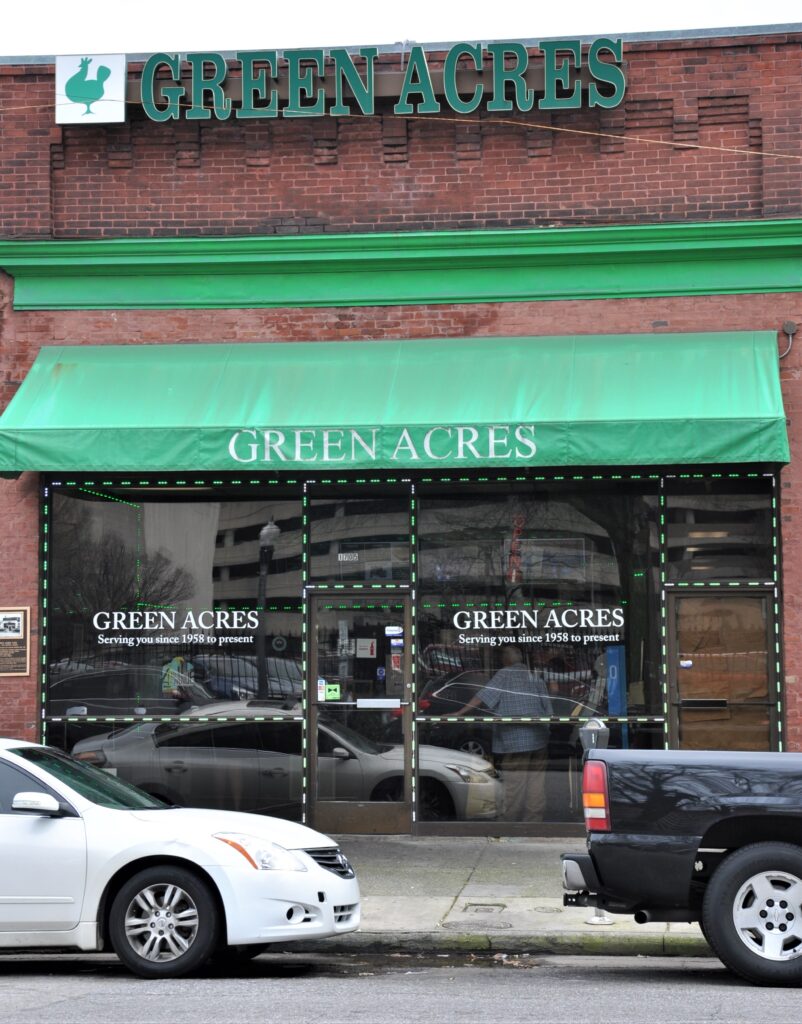
After lunch we drove to the Southern Negro League Baseball Museum. What a little gem! Just 5 years old.
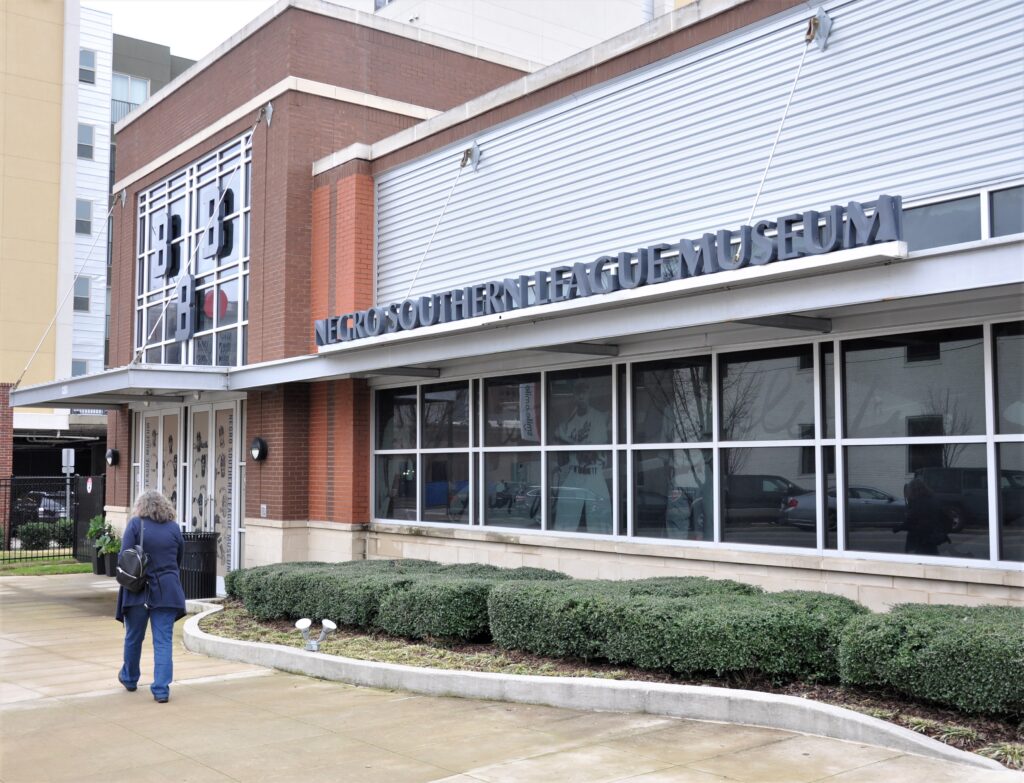
It has a great collection featuring key players and the Birmingham teams in the Southern and National Negro Leagues. About half way through a woman that I think was a director at the museum just came out and started telling us stories and walking us around various exhibits and even let us out a back door to look at the local stadium. Yup, it happened again. I feel like we have a “we’re lonely” sign on us somewhere!
Remember that no playing together segregation law? That came up again as it impacted any attempts by white and black baseball players to play together. It even extended into the little league teams.
Next and final stop was a grocery store and I swear that at least 4 store employees had greeted me by the time we had completed some pretty minor shopping.
We stayed in this evening and watched the news – to see how things are in Nashville and what happened with voting on Super Tuesday. There is a Republican primary here for a Senate seat and a local ballot initiative. The political commentators here are great. Jeannie has been working on improving her conversational Spanish by using a program called “News in slow Spanish”. The Alabamian political commentators could be called “News in slow English.”
Rainy day on Wednesday as we departed Birmingham. Before we left town, we stopped at the Sloss Furnaces, a National Historic Landmark that operated as a pig iron-producing blast furnace from 1882 to 1971. Here’s the first sign I saw. Yup, we’re still in Alabama
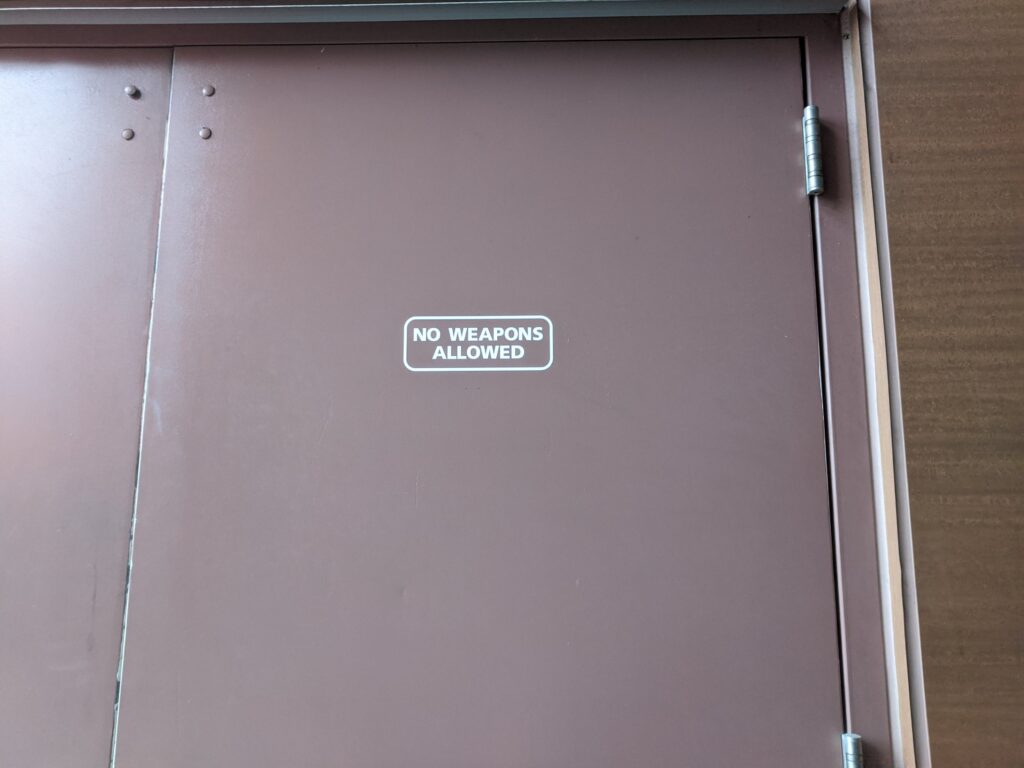
Birmingham was a perfect location for making pig iron as the ingredients (iron ore, limestone and coal) could be mined locally and there was also a well established railroad. It’s called pig iron because when the furnace was tapped, the molten iron poured out into a trough and ran downhill filling the molds. The pattern of the molds resembled piglets suckling at the sow, hence the name “pig iron.”
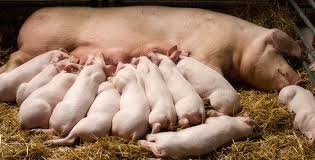
The workforce was immigrants and African Americans that had come to Birmingham in search of work.
A 1910 Birmingham census listed nearly 5,000 foreigners from 28 different countries,
By the early 1900s, with cotton prices continually dropping, many farmers decided that their only path to financial freedom was to leave their farms and head for the “smokestacks” of Birmingham. A newly arrived worker recalled, “The reason we came to Birmingham was ’cause cotton was down to nothin’ If you farming, you couldn’t pay the landlords, you couldn’t pay your bills.”
The Sloss furnaces version of this story inside their very nice visitor’s center left out some of the story that we learned about at the Civil Rights museum. African Americans housed in separate quarters, given the worst jobs and paid the least. It was bad for everyone and there were strikes. We did see mention of the segregation at the outdoor exhibits.
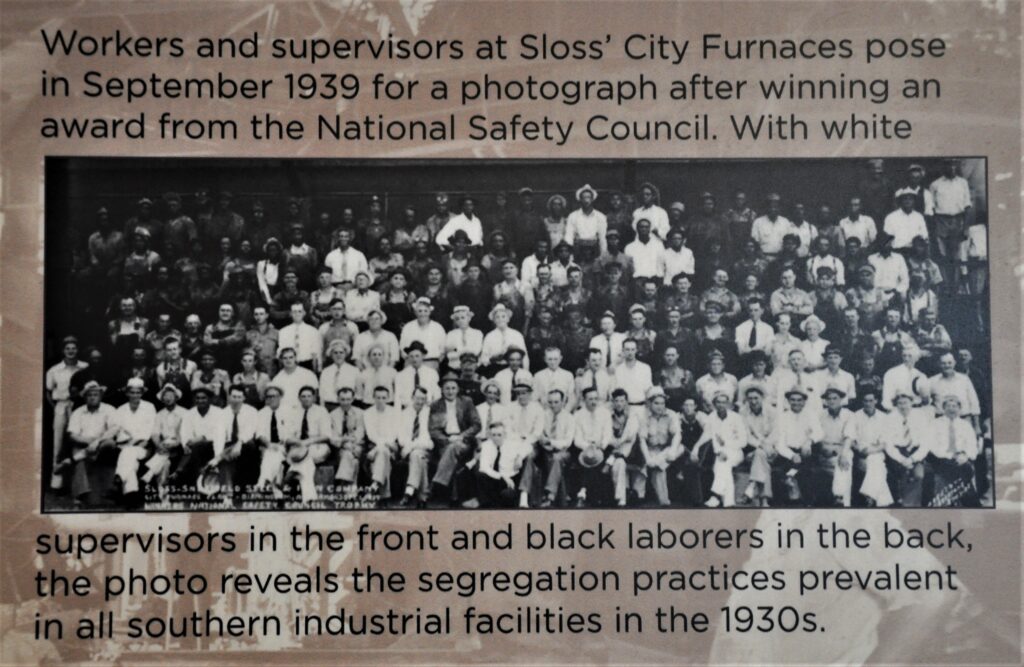
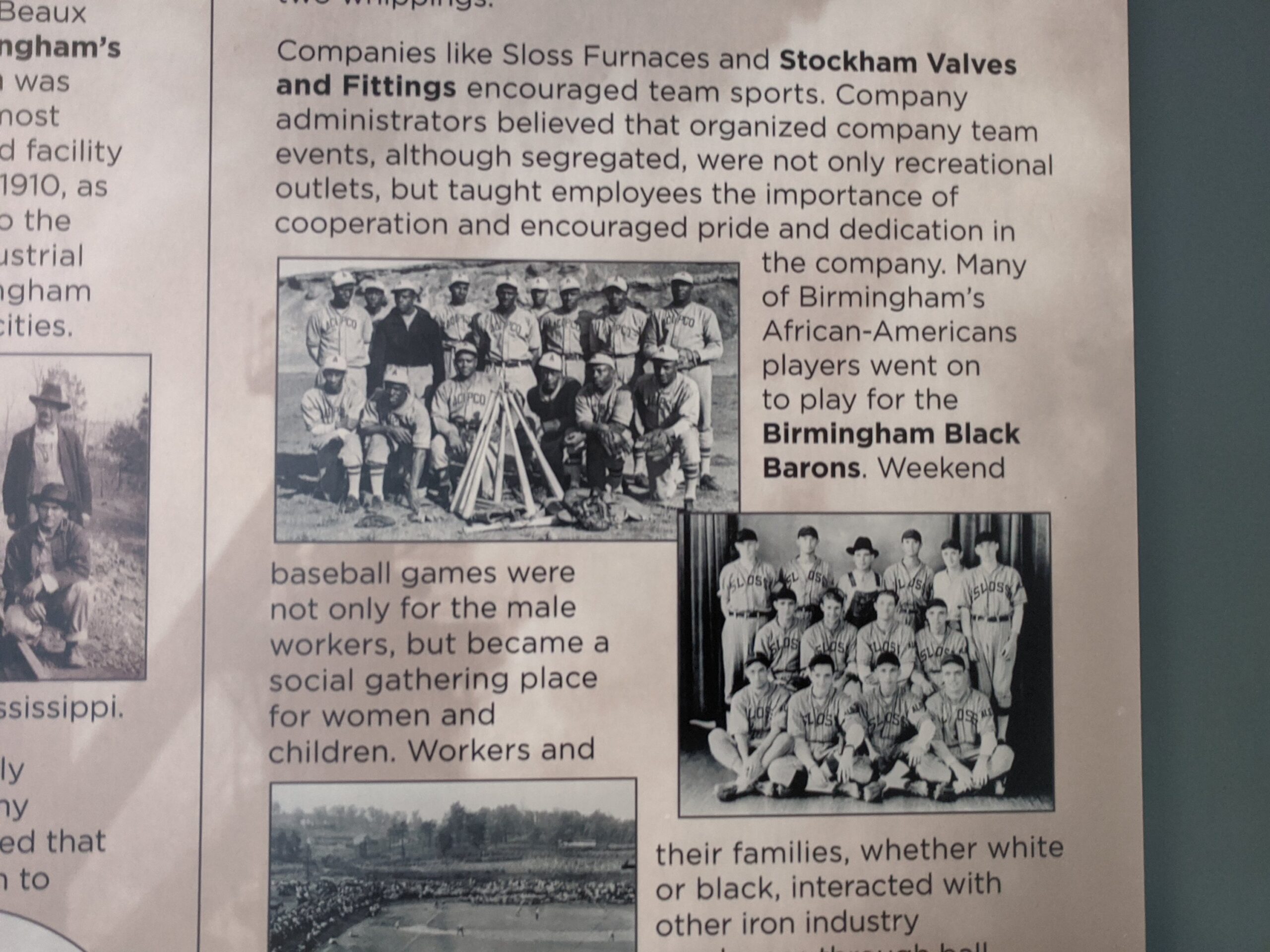
At least we’re all playing baseball together now! It was raining pretty hard while we were there but we walked around the outside a bit. Today the Sloss Furnaces is home to an innovative and active Metal Arts Program that has developed a national reputation as an active casting center for artists who work in cast iron and they had a few sculptures on display.
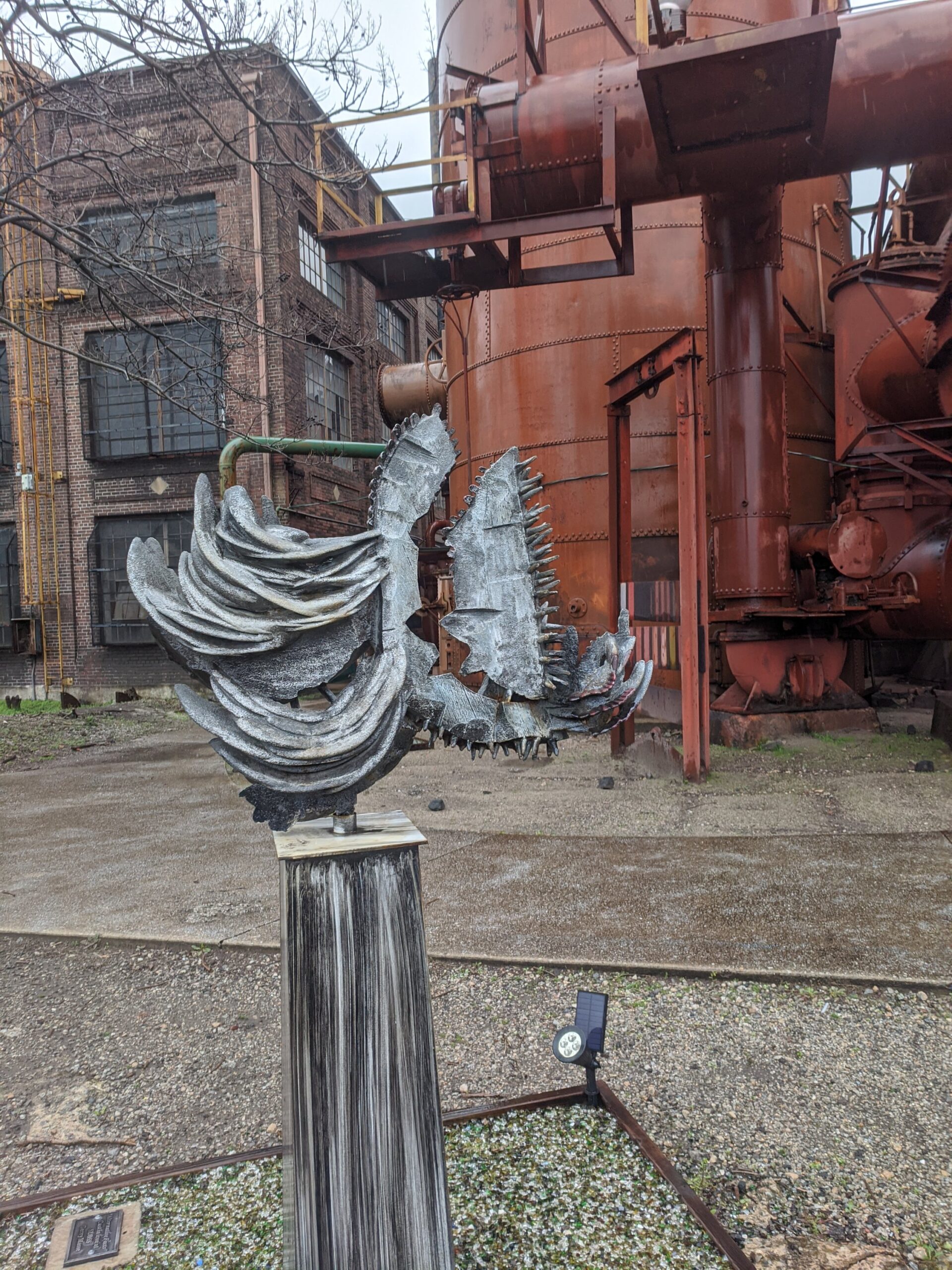
OK, that was a lot of educational material! Here’s some cool pictures now
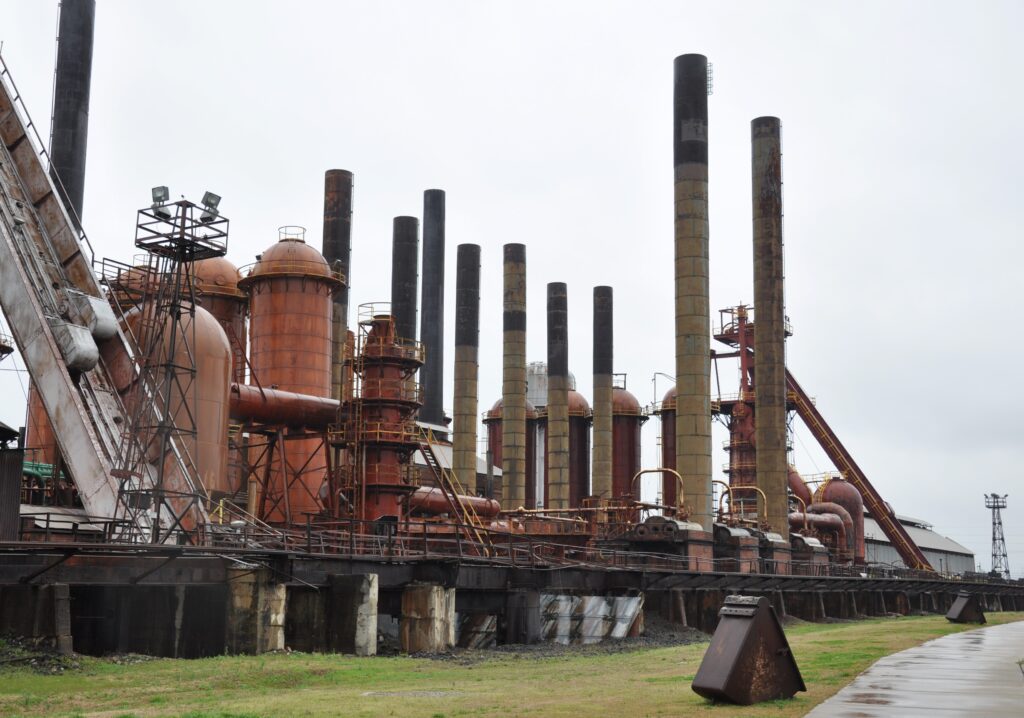
Kudos to Tom for getting us to Hattiesburg safely. The rain was often heavy and I just sat there and focused on my knitting! We made one stop for lunch and bypassed the usual fast food selections for “A Touch of Home” a Mennonite restaurant a few miles off the highway. Busy place with lunch served 11-2. Wondering why Monday you get so many choices and Wednesday not so much?
